Outdoor Training Guide

The Boy Scouts of America offer a wide range of outdoor training course to ensure the leaders of your unit are fully prepared to have a fun filled but safe trip with your scouts. In this chapter we highlight some of the training opportunities that are offered to better educate you as a leader on the polices and procedures of the BSA.
Aquatics Supervisor: Swimming and Water Rescue
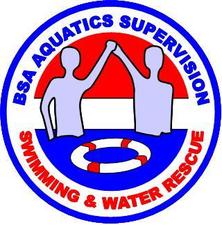
BSA Swimming & Water Rescue provides BSA leaders with information and skills to prevent, recognize, and respond to swimming emergencies during unit swimming activities. It expands the awareness instruction provided by Safe Swim Defense training. The BSA recommends that at least one person with this training is present to assist with supervision whenever a unit swims at a location that does not provide lifeguards.
This training is open to any registered adult leader or Scout who is age 16 or older. Although the training is consistent with training provided professional lifeguards, the Swimming & Water Rescue course is not a lifeguard training course and is not a substitute for BSA Lifeguard. On the other hand, this course addresses important information that may not be covered in generic lifeguard training programs such as: preventative measures, including the buddy system and swim classification tests; how to set up a safe swim area in diverse situations; the use of non-standard rescue equipment; and emergency action plans in remote settings. Participates must pass a BSA Swimmer Test before starting the course.
This training is open to any registered adult leader or Scout who is age 16 or older. Although the training is consistent with training provided professional lifeguards, the Swimming & Water Rescue course is not a lifeguard training course and is not a substitute for BSA Lifeguard. On the other hand, this course addresses important information that may not be covered in generic lifeguard training programs such as: preventative measures, including the buddy system and swim classification tests; how to set up a safe swim area in diverse situations; the use of non-standard rescue equipment; and emergency action plans in remote settings. Participates must pass a BSA Swimmer Test before starting the course.
Aquatics Supervisor: Paddle Craft Safely
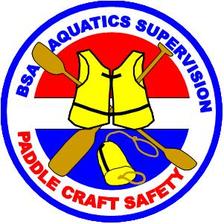
Float trips are popular Boy Scout and Venturing activities. Safety Afloat awareness training provides guidelines for safe float trips and is required of unit leaders, but does not provide the skill training mandated by those guidelines. BSA Paddle Craft Safety expands Safety Afloat training to include the skills, as well as the knowledge, needed for a unit leader to confidently
supervise canoeing or kayaking excursions on flat water.
The training is open to any registered adult leader or Scout who is age 16 or older. It is recommended that at least one person with this training is present to assisting supervising a unit float trip. Participates must pass a BSA Swimmer Test before starting the course. Previous canoeing and kayaking experience is recommended but not required.
supervise canoeing or kayaking excursions on flat water.
The training is open to any registered adult leader or Scout who is age 16 or older. It is recommended that at least one person with this training is present to assisting supervising a unit float trip. Participates must pass a BSA Swimmer Test before starting the course. Previous canoeing and kayaking experience is recommended but not required.
Introduction to Outdoor Leadership Skills (IOLS)
Instructors will help you learn how to set up camp, cook, work with woods tools and about ropes, first aid, planning campfire programs, map reading and compass skills, hiking and packing techniques, nature identification, running outdoor events using Patrol Method, and Leave No Trace. Each outdoor session will bring to life the pages of the Boy Scout Handbook to help you deliver the promise of Scouting to yourself and the youth you serve. It will increase you comfort level and give you confidence as a trained, skilled leader. The program will also give you the opportunity to work with other Scout leaders from your area, meet new friends, and reinforce skill techniques with fellow unit leaders.
Powder Horn
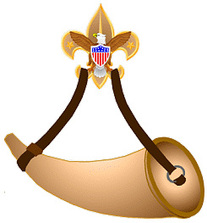
The Powder Horn course is designed to introduce and expose Venturing and Boy Scouting adult unit leaders to the activities and resources necessary to operate a successful outdoor/high adventure unit-level program. It is based on the eight core and eighteen electives found in the Venturing Ranger program. It is intended to help adult leaders get out of the box in finding and using resources and in the way they lead their unit-level high adventure programs. No high adventure skills are taught in this course. It is designed to have some disciplines introduced with a hands-on segment. Example: For scuba if a pool is available, it is suggested to do a Discover Scuba (PADI) session where participants get into a shallow pool and wear scuba gear. It is not scuba certification. Participants will not learn how to rock climb or shoot a skeet course, but will learn where to go to find those who can teach these skills to Boy Scouts and Venturers.
Trek Safely
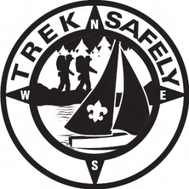
Trek Safely is the Boy Scouts of America’s recommended procedure for organizing and carrying out outdoor treks that involve Boy Scouts, Varsity Scouts, and Venturers. Trek Safely applies to all types of outdoor experiences that involve trekking, including hiking, backpacking, canoeing, horseback riding, caving, rafting, kayaking, sailing, ski touring, mountain climbing, and mountain biking.
Trek Safely is designed to help youth and adult leaders plan and carry out a safe trekking experience for the members of their unit. Similar to Safe Swim Defense, Safety Afloat, and Climb On Safely, it is not designed to teach the skills of trekking. Units that choose to engage in activities requiring specialized outdoor skills should seek qualified instructors to help members learn and acquire these skills prior to the outing.
Trek Safely is designed to help youth and adult leaders plan and carry out a safe trekking experience for the members of their unit. Similar to Safe Swim Defense, Safety Afloat, and Climb On Safely, it is not designed to teach the skills of trekking. Units that choose to engage in activities requiring specialized outdoor skills should seek qualified instructors to help members learn and acquire these skills prior to the outing.
Climb on Safely
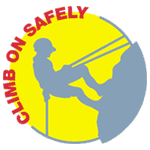
Climb On Safely is the Boy Scouts of America's recommended procedure for organizing BSA climbing/rappelling activities at a natural site or a specifically designed facility such as a climbing wall or tower.
Young people today seek greater challenges, and climbing and rappelling offer a worthy challenge. The satisfaction of safely climbing a rock face is hard to top. While introduction of the Climbing merit badge in spring 1997 spurred interest in these activities through the BSA, the proliferation of climbing gyms and facilities has also made climbing and rappelling readily available throughout the United States.
This increased interest has made the BSA more aware of the inherent risks of climbing and rappelling. More accidents occur during unit rappelling than during council-managed climbing or rappelling, and more accidents have occurred during rappelling than climbing. Many climbing rappelling accidents could be avoided by having qualified instruction from a conscientious adult who has the attention and respect of the youth entrusted to his or her care. Supervision by a caring adult who fully understands and appreciates the responsibility he or she assumes helps assure safety when youth engage in or prepare for climbing or rappelling.
Young people today seek greater challenges, and climbing and rappelling offer a worthy challenge. The satisfaction of safely climbing a rock face is hard to top. While introduction of the Climbing merit badge in spring 1997 spurred interest in these activities through the BSA, the proliferation of climbing gyms and facilities has also made climbing and rappelling readily available throughout the United States.
This increased interest has made the BSA more aware of the inherent risks of climbing and rappelling. More accidents occur during unit rappelling than during council-managed climbing or rappelling, and more accidents have occurred during rappelling than climbing. Many climbing rappelling accidents could be avoided by having qualified instruction from a conscientious adult who has the attention and respect of the youth entrusted to his or her care. Supervision by a caring adult who fully understands and appreciates the responsibility he or she assumes helps assure safety when youth engage in or prepare for climbing or rappelling.
Wood Badge
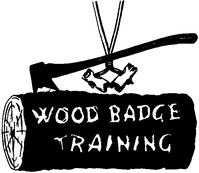
Wood Badge is a training course for Scouters which finally results in their receiving a certificate, a small neckerchief, a leather slide, and two small wooden beads on a leather thong. Lord Baden-Powell, the founder of Scouting, directed the first course in 1919 and gave each of the participants one of the beads which he had captured from the African chieftain Dinizulu. Thus did the course name develop, for its symbol was literally a badge of wood. Wood Badge is, further, Scouting's premier training course. Baden-Powell designed it so that Scouters could learn, in as practical a way possible, the skills and methods of Scouting. It is first and foremost, learning by doing. The members of the course are formed into patrols and these into a troop. The entire troop lives in the out-of-doors for a week, camping, cooking their own meals, and practicing Scout skills.
The Objectives of Wood Badge
Wood Badge has four specific objectives: As a result of attending Wood Badge, participants will be able to:
The Objectives of Wood Badge
Wood Badge has four specific objectives: As a result of attending Wood Badge, participants will be able to:
- View Scouting globally, as a family of interrelated, values-based programs that provide age-appropriate activities for youth.
- Recognize the contemporary leadership concepts utilized in corporate America and leading government organizations that are relevant to our values-based movement.
- Apply the skills they learn from their participation as a member of a successful working team.
- Revitalize their commitment by sharing in an overall inspirational experience that helps provide Scouting with the leadership it needs to accomplish its mission on an ongoing basis.
Kodiak
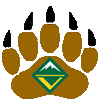
The Kodiak leadership trek is unique in that it is offered in an exciting and challenging atmosphere . A unit or council may offer a Kodiak Trek centered around a challenging 5 day or two 3 day weekend trek. Kodiak teaches leadership skills in a fun way that is internalized by the participants. In other words, it is a challenging trek with simple and fun leadership skills included. Kodiak is not taught indoors or in a classroom; it is done completely outdoors using nature’s examples of leadership.
It is …
It is …
- Fun!
- Relevant to each participant’s life.
- Internalized by participants.
- Based on nature.
- Based on the servant leader concept.
- It is taught by two Guides (one adult and one youth if possible) working together as a team.
- It is based on symbolism using the Kodiak bear.
- Leadership skills are introduced with a hands-on exercise fol-lowed by a short presentation, then reinforced with one or more exercises.
- It uses constant reinforcement.
- It creates an older teen leadership fraternity.
